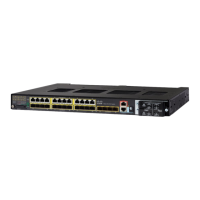600
Configuring QoS
Configuring QoS
Switch(config-pmap-c)# bandwidth percent 20
Switch(config-pmap-c)# queue-limit 32
Switch(config-pmap-c)# exit
Switch(config-pmap)# class outclass3
Switch(config-pmap-c)# bandwidth percent 10
Switch(config-pmap-c)# queue-limit 16
Switch(config-pmap-c)# exit
Switch(config-pmap)# class class-default
Switch(config-pmap-c)# bandwidth percent 10
Switch(config-pmap-c)# queue-limit 272
Switch(config-pmap-c)# exit
Switch(config-pmap)# exit
Switch(config)# interface gigabitethernet 0/1
Switch(config-if)# service-policy output out-policy
Switch(config-if)# exit
You can configure and attach as many output policy maps as there are switch ports, but only three unique queue-limit
configurations are allowed. When another output policy map uses the same queue-limit and class configurations, even
if the bandwidth percentages are different, it is considered to be the same queue-limit configuration.
Configuring QoS
Before configuring QoS, you must have a thorough understanding of these factors:
The types of applications used and the traffic patterns on your network.
Traffic characteristics and needs of your network. Is the traffic bursty? Do you need to reserve bandwidth for voice
and video streams?
Bandwidth requirements and speed of the network.
Location of congestion points in the network.
These sections describe how to classify, police, and mark incoming traffic, and schedule and queue outgoing traffic.
Depending on your network configuration, you must perform one or more of these tasks.
Default QoS Configuration, page 600
QoS Configuration Guidelines, page 601
Using ACLs to Classify Traffic, page 602
Using Class Maps to Define a Traffic Class, page 606
Configuring Table Maps, page 608
Attaching a Traffic Policy to an Interface, page 609
Configuring Input Policy Maps, page 610
Configuring Output Policy Maps, page 628
Configuring QoS Marking and Queuing for CPU-Generated Traffic, page 640
Default QoS Configuration
There are no policy maps, class maps, table maps, or policers configured. At the egress port, all traffic goes through a
single default queue that is given the full operational port bandwidth. The default size of the default queue is 160
(256-byte) packets.

